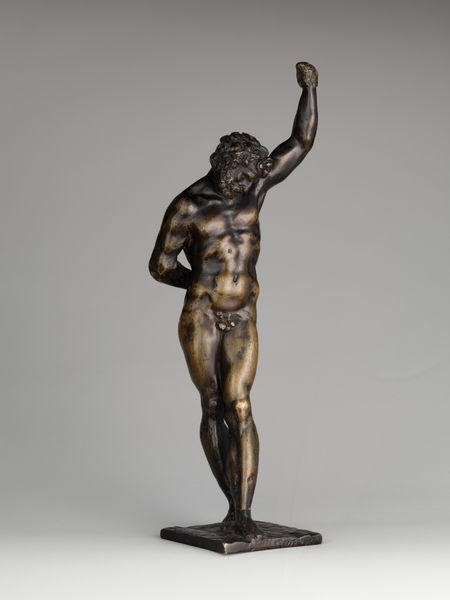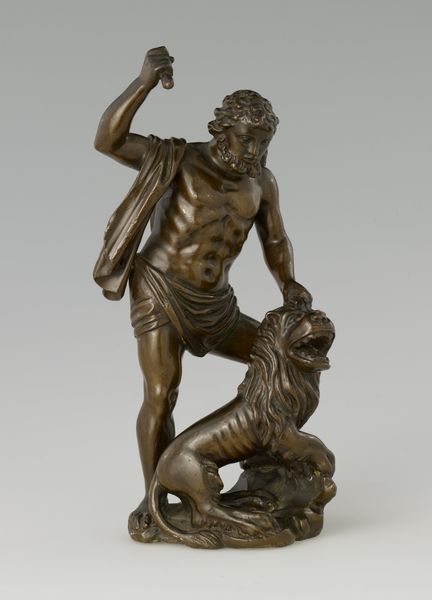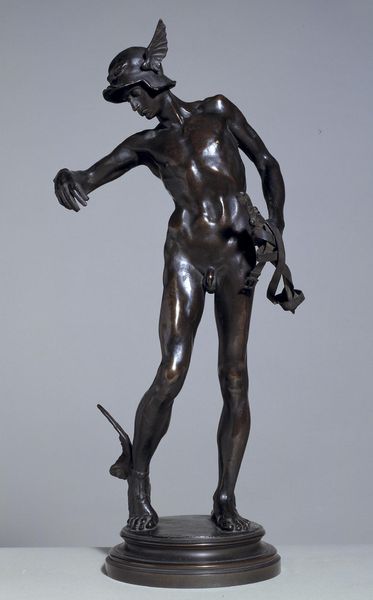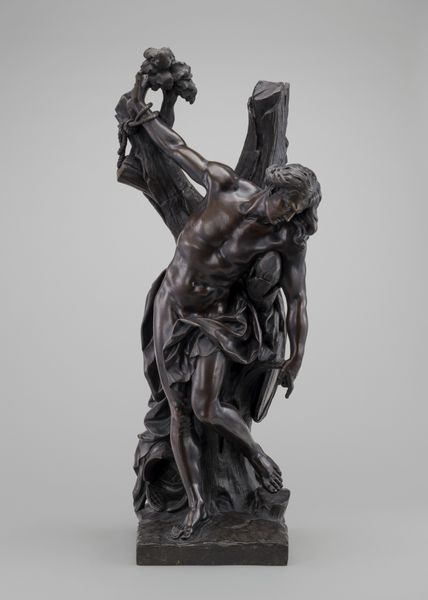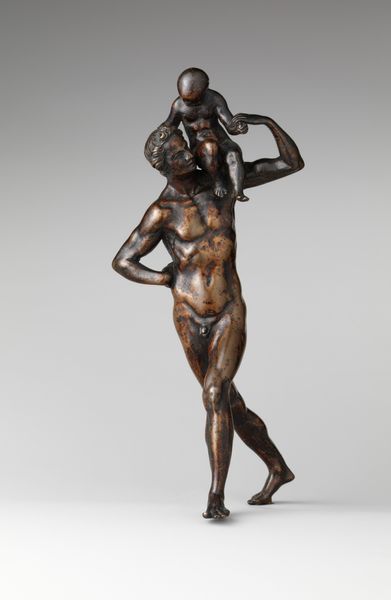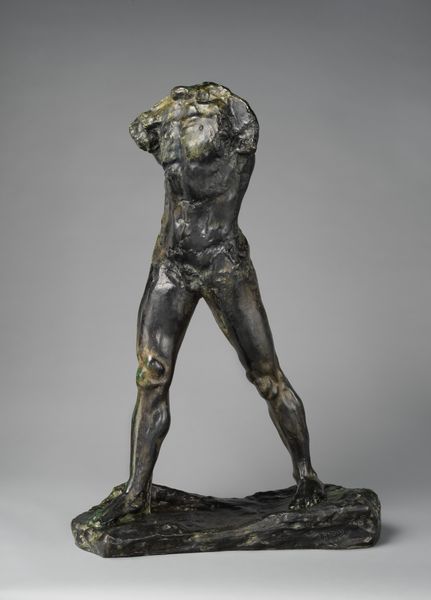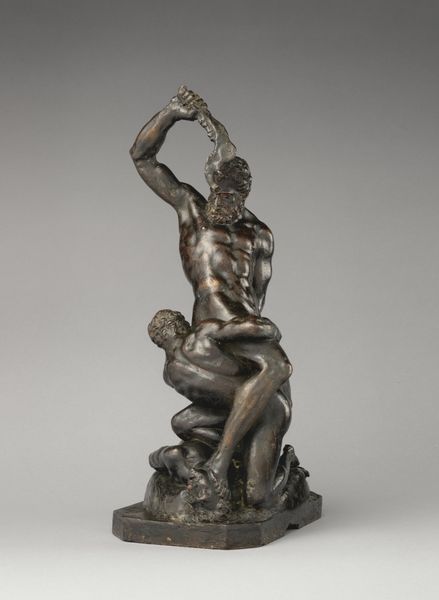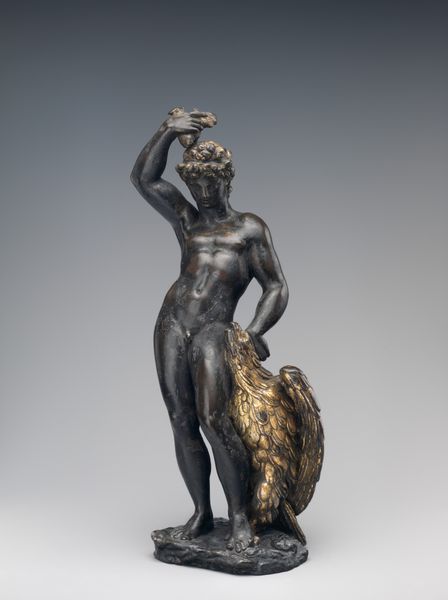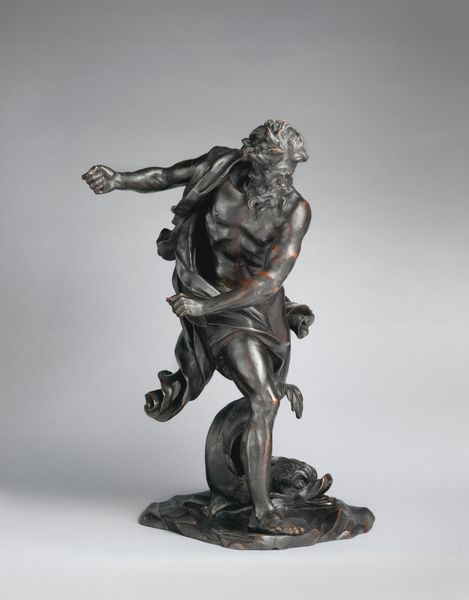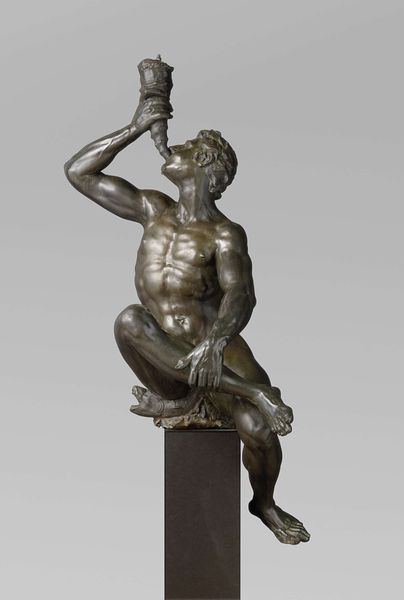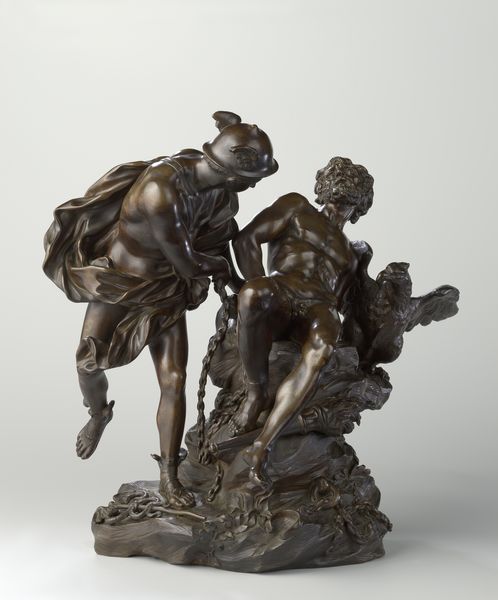
bronze, sculpture
#
allegory
#
sculpture
#
bronze
#
mannerism
#
sculpture
#
decorative-art
#
nude
Dimensions: Height: 11 3/8; Width (elbow to forearm): 3 5/8; maximun depth (diagonal from tree trunk support behind leg to front edge of base): 5 1/16 in. (28.9 x 9.2 x 12.9 cm); Wt. 6lb. (2.7216kg)
Copyright: Public Domain
Curator: Here we have "Pluto and Cerberus," a bronze sculpture crafted between 1600 and 1615 by Giovanni Battista di Jacopo, presently housed at the Metropolitan Museum of Art. Editor: My initial impression is one of striking dynamism contained within a relatively small scale. The artist’s manipulation of bronze seems to suggest potent movement. Curator: Absolutely. Notice how di Jacopo employs a serpentine line, the figura serpentinata, a hallmark of Mannerist sculpture. The twisting pose of Pluto creates a visually stimulating asymmetry. This use of line imbues the bronze, normally a rigid material, with incredible energy. Editor: The symbolism is so rich, isn't it? Pluto, god of the underworld, represented here with Cerberus, the multi-headed dog guarding the gates. This represents not only dominion over death, but also the fierce protectiveness of the boundaries between life and death, the known and the unknown. The three heads likely represent the past, present, and future, symbolizing Pluto’s control over time itself in the underworld. Curator: Precisely. Further analyzing the composition, consider the negative space. The lifted arm creates a diagonal axis contrasted by the grounded stance. These elements, though representational, act as structural tools. The dark patina intensifies shadows, contributing to a dramatic chiaroscuro effect, thereby emphasizing Pluto's muscular form. Editor: And it's through those defined muscles that we see not just power but a certain... pathos. There’s a burden there. He's forever bound to his duty. The slight downturn of his head even hints at melancholy. Cerberus too embodies anxiety, perpetually vigilant. Curator: That’s a fascinating interpretation! For me, that reading drifts too far from the sculpture’s surface. It disregards the artistic intentions evidenced by the precise execution of form and calculated asymmetry. Editor: Perhaps! But to me, art is always, at its heart, a projection of human experience and shared symbolic memory. And the consistent use of figures like Pluto tells us that these concepts resonated powerfully across cultures and centuries. Curator: Ultimately, it reveals how artistic innovation intertwines with intellectual concepts within a particular cultural moment. The manipulation of form serves to elevate a concept, which the iconographic richness embellishes with meaning. Editor: It highlights art's capacity to embody abstract concepts through relatable figures and enduring symbols. Thanks for clarifying your unique vision!
Comments
No comments
Be the first to comment and join the conversation on the ultimate creative platform.

